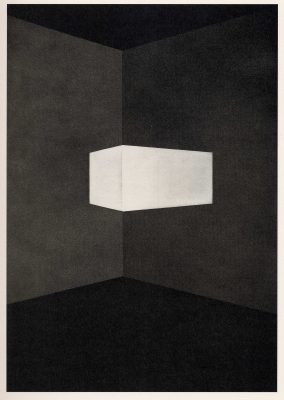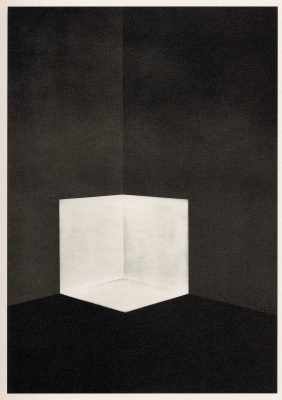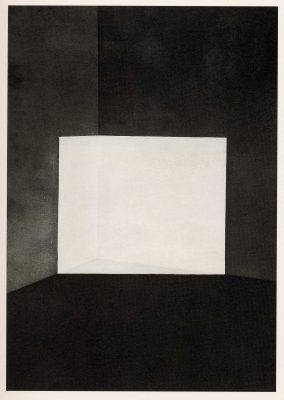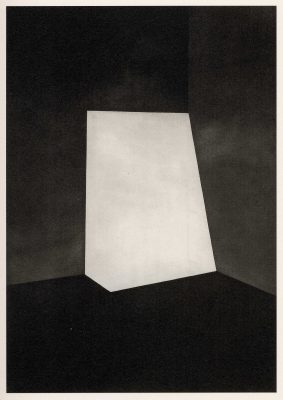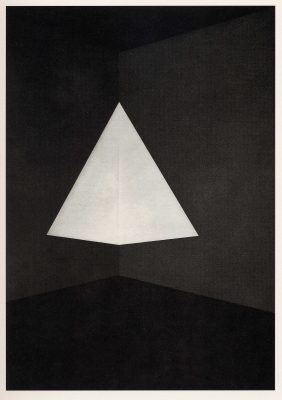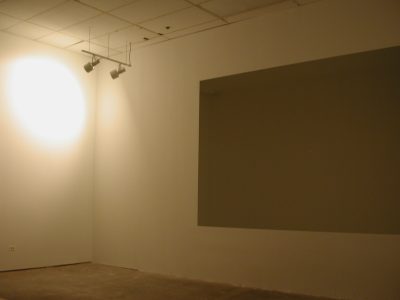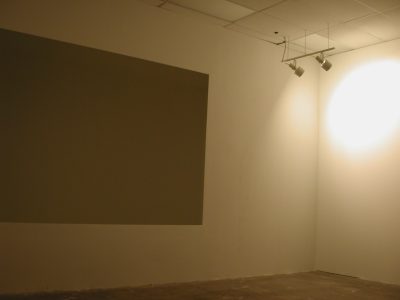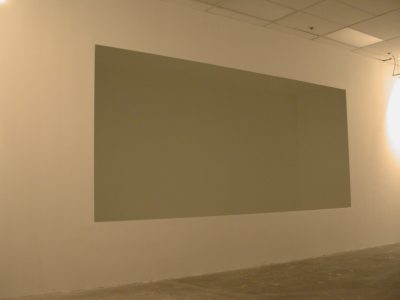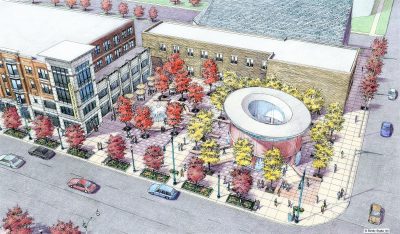Exhibitions
ABOUT THE EXHIBITION
On the occasion of the installation of the permanent public art work UIC Skyspace on the UIC campus by internationally recognized American artist James Turrell, Gallery 400 is mounting the exhibition James Turrell: In Light. The exhibition includes a major Turrell gallery work from the collection of the Art Institute of Chicago, Rayna (1976), which had not been built or exhibited since 1982. The show also features ten Turrell aquatint prints from the portfolio First Light 1989–90.
Located on the Turrell-designed Gateway Plaza on the southwest corner of Chicago ’s Roosevelt Road and Halsted Street, UIC Skyspace is a 30-foot high freestanding elliptical chamber for viewing the complex interplay of sky, light and atmosphere. Inside, visitors can sit on benches lining the perimeter and gaze up toward an opening in the ceiling. The precisely determined 16-foot oculus frames the sky and celestial changes, using light to create a constantly shifting, colorful visual display that brings the space of the sky down to the plane of the building. Turrell has designed numerous other skyspaces in countries around the world, including Italy, Israel, Belgium, England, Japan, and the United States. These autonomous structures contain precisely calculated apertures that facilitate the phenomenon known as “celestial vaulting,” in which the sky appears to be on the same plane as the ceiling. Best viewed at sunrise and sunset, skyspaces are an extraordinary mechanism for vision, encouraging us to examine our powers of perception and our comprehension of the outside world. The strength of Turrell ’s skyspaces lies not purely in an artistic practice, but rather in the way he uses the work to draw together disparate strands of contemporary practice, such as earthwork and public art, with sources and subjects as diverse as architecture, astronomy, and psychology. Through his carefully constructed and controlled environments, Turrell has found a way to engage the emotional, the sensory, and the intellectual, bringing older American artistic traditions concerning nature and the infinite, notably the sublime, into contemporary practice.
“I am really interested in the qualities of one space sensing another. It is like looking at someone looking. Objectivity is gained by being once removed. As you plumb a space with vision, it is possible to ‘see yourself see.’ This seeing, this plumbing, imbues space with consciousness.”
Often ephemeral but always stimulating, Turrell’s oeuvre of perceptual installations, light projections, and skyspaces explore the complex relationship between light and space, often to dramatic effect. As part of the artist’s Space Division Constructions series, Rayna is a room divided into a “sensing space” placed behind a rectangular aperture in the central dividing wall with a viewing space located in front of it. Seemingly opaque at first, the aperture over time dissolves into what seems to be a translucent scrim that reveals the receding space, fog-filled, and of uncertain depth. Using space to expand or enhance perceptions, the works in the Space Division Constructions series explore spatial sensation and perception. Turrell, commenting on what could be seen as the revelatory nature of vision, noted, “I am really interested in the qualities of one space sensing another. It is like looking at someone looking. Objectivity is gained by being once removed. As you plumb a space with vision, it is possible to ‘see yourself see.’ This seeing, this plumbing, imbues space with consciousness.” Deceptively simple, Turrell’s Space Division Constructions are challenging endeavors in individuation and personal awakening. Rayna was first exhibited in 1976 at the Arco Center for Visual Art in Los Angeles.
Part of a collection of twenty, the ten First Light aquatints on display at Gallery 400 represent some of Turrell’s only work in print media. A physical and material record of a projected light moving across a dark room, each print, exquisite and glowing, captures the ephemeral luminescence of flickering light. The aquatints, essentially mediations on light and space, are modeled on Turrell’s early experiments with projected light, as seen in his first corner projection piece Afrum-Proto (1966). Created while a graduate student at the University of California at Irvine, Afrum-Proto is a virtual and illusory projected cube of light. Luminous projections, like that of Afrum-Proto, which Turrell terms “holes in reality,” led to further experimentation with other floating forms, eventually spawning the First Light aquatints. The First Light prints shown at Gallery 400 were from the collection of the Milwaukee Art Museum, WI.
Already known worldwide for his perceptual installations and luminous projections, Turrell has recently become nearly iconic, due to mounting interest in his monumental observatory Roden Crater, located in the Painted Desert about forty miles north of Flagstaff, AZ. Within Roden Crater, a massive undertaking almost thirty years in the making, Turrell constructed a series of underground tunnels and skyspaces in order to capture and frame the celestial grandeur of the desert sky. The subject of over 140 solo exhibitions worldwide, Turrell’s work can be seen in permanent installations at The Henry Art Gallery, Seattle, and The Nasher Sculpture Garden, Dallas. Various major museums, including The Mattress Factory, Pittsburgh; The Museum für Moderne Kunst, Frankfurt am Main, Germany; The Museum of Fine Art, Houston, and PS1, Long Island City, NY also represent works by the light and space artist. The recipient of countless grants and awards, including a fellowship from the prestigious John D. and Catherine T. MacArthur Foundation, Turrell is truly an international figure of great cultural and artistic importance. Also a pilot and cattle rancher, the artist currently lives in Arizona.
A catalogue with texts by Dean Judith Kirshner of the College of Architecture and the Arts, among others, and edited by Maureen Pskowski accompanied James Turrell: In Light and the UlC Skyspace installation. Additionally, in March 2005, the College hosted a symposium on aesthetic and scientific ideas related to UlC Skyspace. James Turrell also lectured in the premiere Richard and Mary Gray College of Architecture and the Arts Distinguished Speaker ’s Lecture.
ARTISTS
James Turrell
SUPPORT
James Turrell: In Light is supported by the College of Architecture and the Arts, University of Illinois at Chicago; Howard and Donna Stone; Penny Pritzker and Brian Traubert; the Graham Foundation for Advanced Study in the Fine Arts; the Elizabeth F. Cheney Foundation; the Andy Warhol Foundation for the Visual Arts; and the Illinois Arts Council, a state agency. Special assistance was provided by the Art Institute of Chicago and the Milwaukee Art Museum.



